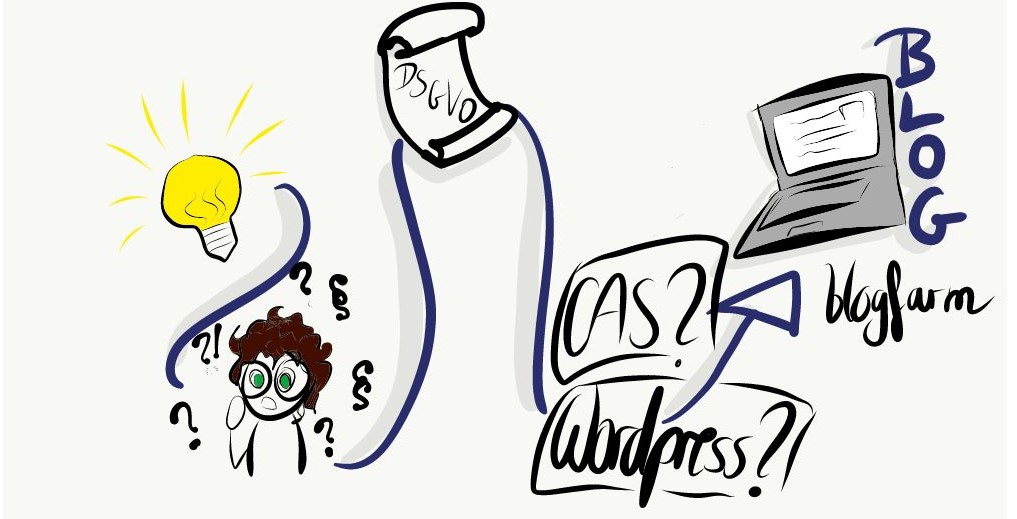The Nevernight Chronicle by Australian author Jay Kristoff consists of the three novels Nevernight (2016), Godsgrave (2017), and Darkdawn (2019). The fantasy trilogy (which is very much not YA due to very graphic depictions of sex and violence) follows the story of Mia, who joins the Red Church, an order of assassins, in order to enact revenge upon the men who killed her family. What follows are a lot of plot twists and dark turns sprinkled with some romance on top. The novels break with a traditional writing style by adding ‘historical’, fun-fact-footnotes and overall sassy commentary.
When I first read Nevernight at sixteen years old, I was, to be quite honest, a little taken aback by the protagonist Mia. In contrast to the many female protagonists speculative fiction offers now, she certainly defies a well-developed stereotype. Of course she does not stand alone, as for example Suzanne Collin’s Katniss clearly showcases, but there is still something special about Mia that I would like to bring to your attention.
“You think I should have saved myself, is that it? That I’m some gift to be given? Now forever spoiled?” (Kristoff Nevernight 11)
As much as society has changed, female protagonists are still often bound to a very particular set of rules and norms. If we just take a look at the several Disney princesses, the moral is still the same: Female protagonists have to be obedient, sweet, controlled, and can generally only go on adventures if a capable man is at their side (Wheelan 176). Even though Disney may disguise it by putting a frying pan into their modern princess’ hands, the message is still the same (Brave being an exception here):
“[M]en have power and agency, women who are submissive and obedient are rewarded with marriage, and disobedient and powerful women are punished for their attempts to defy the patriarchal status quo” (Hohenstein 92).
The same pattern also occurs in literature time and time again; the most obvious example here Bella Swan from Twilight. Adolescent women’s bodies are still depicted as simultaneously dangerous and desirable, which results in their presentation as creatures who’s bodies and sexuality must be controlled by explicit as well as implicit rules (Day 75).
Kristoff, however, throws all of these stereotypes and demands over board with his protagonist Mia and offers girls and women another perspective on the female body. Mia defies pretty much every regulation ever put on the female protagonist: She is violent, aggressive, short-tempered, swears quite a lot, and her sexual encounters are openly displayed (If you are in search of more characters like Mia, I suggest Korra from The Legend of Korra or Lyra from His Dark Materials). The exploration of her desires is no longer bound to warnings or eventual backlash of (sexual) empowerment (Day 75).
The take on a teenage girl having sex for the first time is emphasised clearly, as the scene is paralleled with her first murder in order to symbolise a loss of innocence in two ways (Kristoff Nevernight 5-11). Right from the start, the reader notices that Mia has conviction and agency, which allows her to decide for herself when it is time to have sex. Furthermore, the narrative makes no heightened fuss about the decision, quite the reverse; it is depicted as the most normal thing.
The importance of this representation is the lack of fetishisation of female purity and the social construct of virginity. If you need an example, just look at Netflix’s Chilling Adventures of Sabrina; the whole four seasons are essentially about when Sabrina will finally lose her well-guarded virginity. Does any woman need this narrative in 2021? No.
Mia defies society’s expectation and demands by choosing her first time to be with a sweetboy (aka sex worker) – which sixteen year old does that? Mia, because she chose to do so. And no, this does not promote teenagers to go for sex workers, but the importance of choice. Her actions clearly illustrate how her sexual encounters cannot and should not be controlled by society, because these rules and regulations do not apply to her, as it is her choice alone. The emphasis on choice is very reminiscent of Arya Stark and her first sexual encounter in Game of Thrones, who just like Mia breaks free from gender roles and the boundaries that come with it.
Why is this relevant? Because Jay Kristoff’s trilogy allows women to have physical agency, to experience desire and act on it without being vilified like in the femme fatale trope – sex is no longer a taboo topic. Moreover, the overcoming of this cultural conditioning enables girls to gain power necessary to “become women, leaders, and heroes” (Day 76).
“[…] I thought about my life and where it’d been steered and understood I’d never really had a say in any of it. And I wanted something that could just be mine. My choice. […] So I chose her.” (Kristoff Darkdawn 267)
Just as Kristoff resists the convention regarding the depiction of the body, he also explores the queerness of his protagonist in Godsgrave and the following novel. While there is no limitation to what authors can write about, but there is certainly a risk of getting it wrong whenever straight people decide to elaborate on these relationships.
While we are certainly seeing an increased portrayal of queer characters in several forms of media, it is still far away from the norm, especially when it comes to protagonists. More often than we like to acknowledge, queer representation is reserved for the side characters with minimum importance who ultimately die. This can get easily problematic when the only queer characters simply serve no other purpose than being killed off.
When looking at queer representation and canon relationships in other media, one will notice their high mortality rate and tendency for the very contrast to a happy ending. Prime examples for that are The 100, Holby City, Flores Raras and several others; the list is quite long. The message behind such storylines is quite simple: Queer relationships should not be treated equally, because they cannot be maintained either way. Another issue which just came up again is the erasure of queer representation in, again, Chilling Adventures of Sabrina: A queer relationship was suddenly turned back into a heterosexual one, because one woman was apparently a man in disguise. Portraying same-sex relationships seems awfully difficult, even though it is not, as Kristoff’s novels clearly showcase.
Mia underlines how queer representation is done right. When she falls for Ashlinn, who previously murdered her boyfriend Tric (Kristoff Nevernight 369), the arising controversy is not caused by their gender, but by Ashlinn’s previous deeds. Tric, when coming back from the dead, is highly disappointed in Mia and feels betrayed, but Mia remains true to her feelings and shuts any attempts of Tric getting back together with her down (Kristoff Darkdawn 266f.). Thereby Kristoff also lets go of the overdone love triangle trope and allows the readers to experience actual (satisfying) queer representation.
Even though he apparently does not believe in happy endings, Mia and Ashlinn do get one in a broader sense (they die, but then come back like Tric and get to spend the rest of their undead existence together; it is complicated). When taking the other queer relationship of Mia’s father into consideration who died for his affections for his lover, it is extremely important to balance these two events out. Because of that and Mia’s refusal to get back together with Tric, the queer narrative serves to normalise these relationships and stack them up as equally valid, important, and well rounded.
In addition to that, great successes like the Nevernight Chronicle help to spread more awareness of queer relationships and the support that is so desperately needed. Storylines like one mentioned from Chilling Adventures of Sabrina only add to the vilification and avoidance of the LGBTQ+ community and narratives, even if it was not intended. When portraying marginalised groups, ignorance is no longer tolerable, which is why it is crucial to put thought into the narrative presented to the audiences.
Works Cited
Day, Sara K. “Sexual Awakening and Social Resistance in Young Adult Dystopian Novels” Female Rebellion in Young Adult Dystopian Fiction, by Sarah K Day. et al. Ashgate, 2014. E-Book, pp. 75-94.
Hohenstein, Svenja. Girl Warriors. Feminist Revisions of the Hero’s Quest in Contemporary Popular Culture. MacFarland & Company, 2019. E-Book.
Kristoff, Jay. Darkdawn. HarperVoyager, 2019.
Kristoff, Jay. Nevernight. HarperVoyager, 2016.
Whelan, Bridget. “Power to the Princess: Disney and the Creation of the Twentieth-Century Princess Narrative.” Kidding Around. The Child in Film and Media, edited by Alexander N. Howe und Wynn Yarbrough. Bloomsbury, 2014, pp. 167-192.





